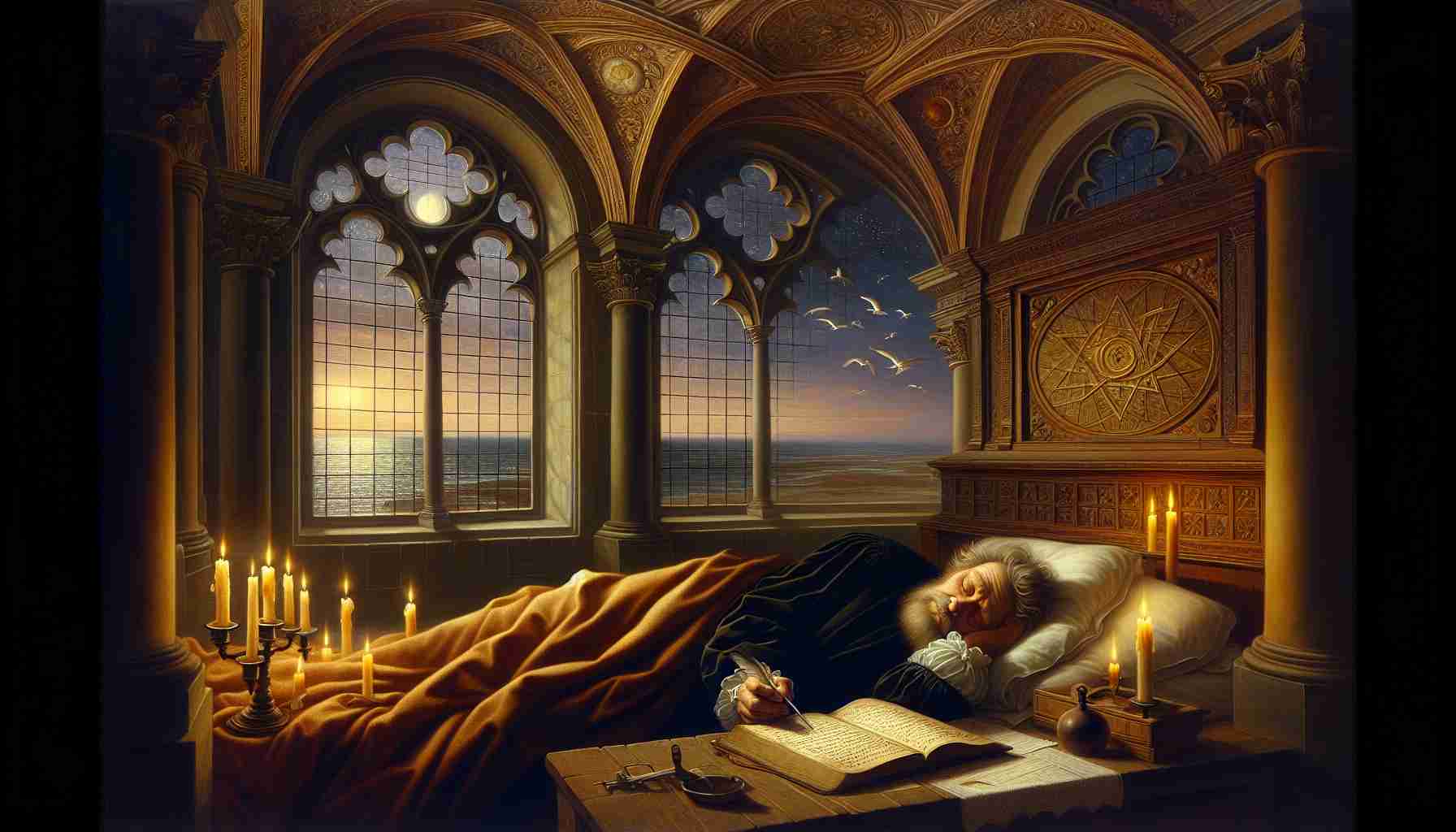

The wind pressed against the red-tiled roofs of Frombork on a gray May morning in 1543. Seagulls called over the Baltic, and the cathedral spire cast a long, trembling shadow over the cobbled courtyard. Inside the canons’ quarters, among manuscripts and dust, Nicolaus Copernicus took his final breath.
He lay still beneath a carved ceiling that bore the stars — not as symbols, but as guides and witnesses. In his withered right hand, blood no longer flowed, but his last work, De revolutionibus orbium coelestium, had already journeyed beyond him. A boy, red-cheeked and wide-eyed, had held it at the edge of Copernicus’s bed only hours before — the ink still smelling of lamp oil, the pages trembling slightly in the boy’s hands.
Many would speak of the turbulence to come — the whispered discomfort of bishops, the eventual thunder of the Inquisition — but for Copernicus, the heavens did not inspire fear. They inspired worship.
“The heavens declare the glory of God,” he would say from the cathedral pulpit, quoting Psalm 19:1 with an almost reverent hush. And he believed it. In every arc of a planet’s path, he saw divine intelligence; in every deviation from Ptolemy’s layered spheres, he heard a holy question: What if this — this beautiful disarray — was the truth?
As canon of Frombork Cathedral, he wore robes of black wool and kept the hours of the Liturgy. Psalms rose with the morning mist, drifting upward like incense from the nave. Yet unlike men content with chants and church bells, Copernicus looked also skyward, to the great dome God Himself had etched, and asked: "What if our place is not the center?"
Many nights he climbed the tight stairwell to his observatory tower, a modest structure perched above the cathedral grounds. There, with rough instruments and aching joints, he tracked Mars’ lurching motion, measured Venus against the horns of the moon. The dome above was eternal, but it was not fixed. The stars moved, but predictably. Could chaos, he wondered, wear the clothes of divine order?
When his model came together — the sun immobile, the earth moving like a pilgrim through space — stars no longer spun in circles of imperfection. They danced with glorious precision. The old geocentric model cracked like brittle ice under sunlight. And though he feared the fury of minds clutched too tightly by old truths, he feared God more — not His wrath, but the desecration of His creation by ignorance.
King Sigismund had long ignored his work. Rome had looked upon him with suspicion but little urgency. Perhaps, Copernicus knew, his theory would be shelved, buried in the library beside other curiosities. But God’s design could not be so easily entombed. Truth waited only for those brave enough to lift the veil.
In Wittenberg and Nuremberg, whispers bloomed into conversations. “Have you read the Polish canon?” scholars asked. “Madness,” some said. “Genius,” said others. When Galileo would peer through his telescope decades later and find moons circling Jupiter, it would be Copernicus’s ghost guiding the lens. And when Luther scoffed at the spinning earth — “Does the Bible not speak plainly?!” — Copernicus would not answer with sword or scorn, only silence and stars.
And still, Frombork stood.
The cathedral survived war and rebuke. Even when Swedish forces sacked its walls in 1626, they found the tower still clutching timeworn astrolabes and sun charts. And even when Copernicus’s bones lay forgotten beneath the floor, covered by centuries of stepped prayers, his ideas rang like bells before dawn.
Only in the 21st century did archaeologists confirm the resting place of the man who changed the heavens. A fractured skull. A jawless smile. DNA matched from a strand of hair in a centuries-old book. In death, as in life, Copernicus remained part of a larger design — not at the center, but never marginalized.
In that quiet cathedral by the sea, where crows still wheel over red roofs and the wind sings through belfries, a man once stood, half-priest, half-heretic, all worshiper. And dared to place truth where fear once reigned.
Not to displace God from the cosmos — but to reveal Him.